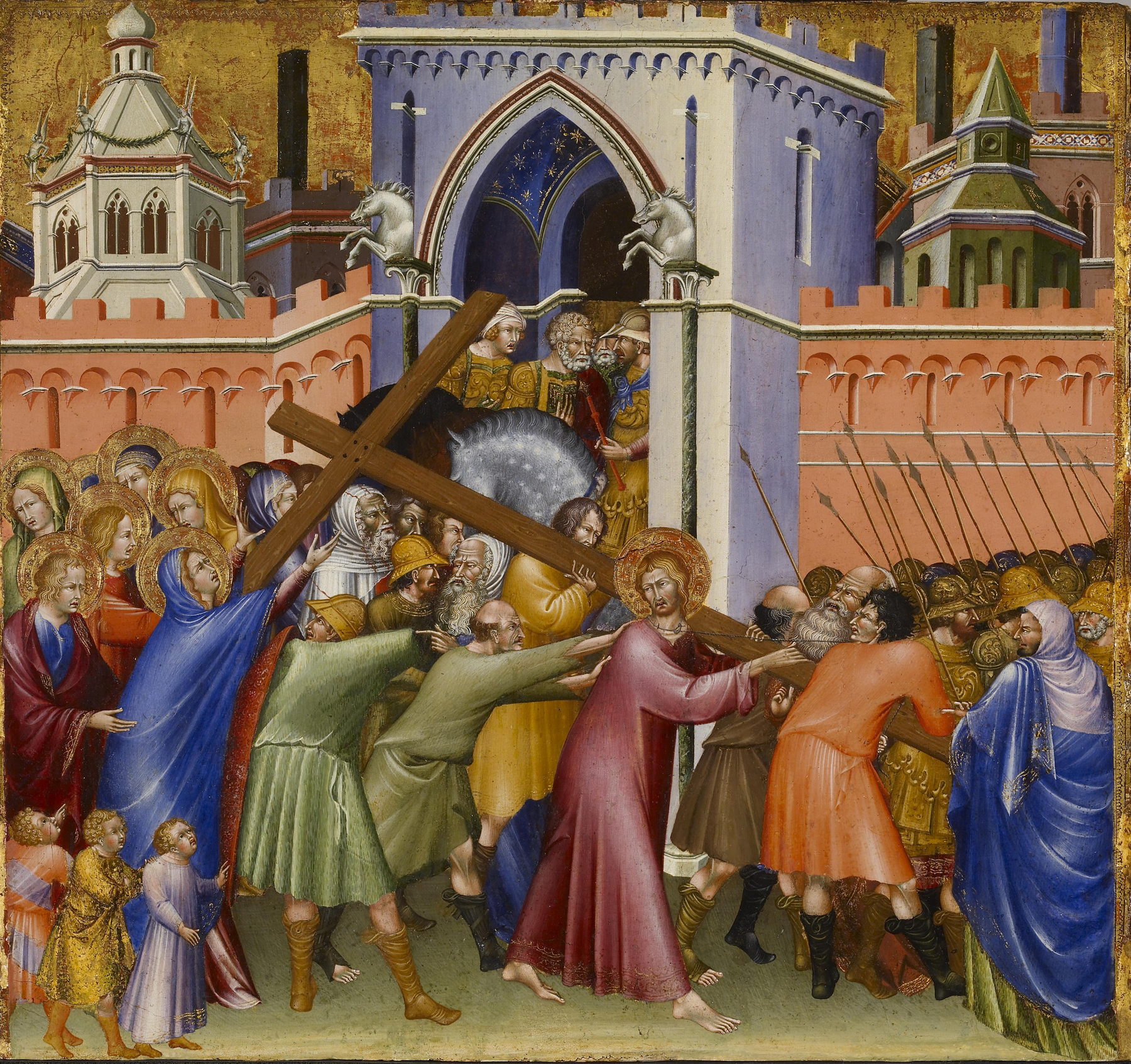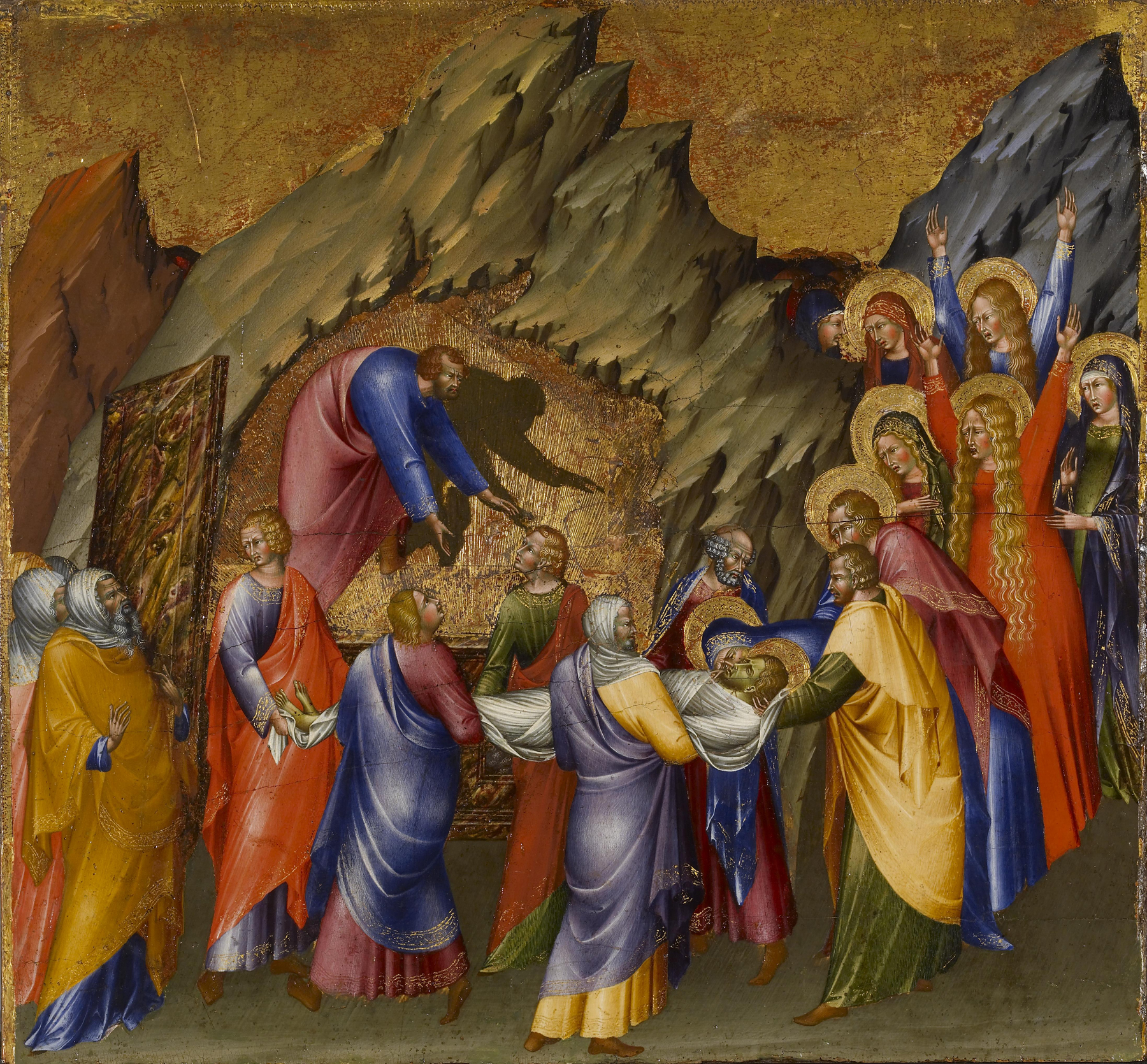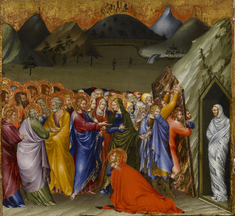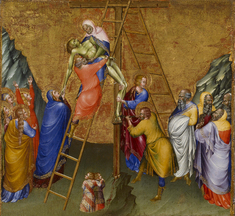Four Panels with the Passion of Christ from a Predella
(Renaissance Europe )
These four panels are from a “predella,” the lowest section of an altarpiece typically painted with scenes from the lives of the holy figures represented in the altarpiece’s central section. This predella, from an altarpiece painted by Giovanni di Paolo in 1426 for the chapel of the Pecci-Paganucci family in the church of San Domenico in Siena, depicts several episodes from the life of Christ. From left to right it shows Christ raising of his friend Lazarus from the dead (37.489a), his being forced to carry the cross on the way to his execution (37.489b), the removal of his dead body from the cross (37.489c), and the entombment of his corpse (37.489d). A fifth panel depicting the Crucifixion, now at the Lindenau-Museum in Altenburg, Germany, originally occupied the center of the predella. The main panels of the altarpiece, depicting the Madonna and Child flanked by saints, are now in the church of Santi Clemente e Giusto in Castelnuovo Berardenga near Siena.
The panels’ multi-figured, dramatic narrative scenes demonstrate Giovanni di Paolo’s gift for storytelling. The figures are represented in extreme emotional states, from the onlookers overwhelmed by the stench of Lazarus’ tomb to the desperate sorrow of the mourners at Christ’s entombment. In the latter scene, the shadow cast by the figure of Nicodemus—bending over the tomb to receive the body of Christ—is one of the earliest known representations of a cast shadow in Italian Renaissance art.
Provenance
Provenance (from the French provenir, 'to come from/forth') is the chronology of the ownership, custody, or location of a historical object. Learn more about provenance at the Walters.
The Church of San Domenico, Siena, 1426 ["Pecci-Paganucci" altar until mid 16th century, "Malavolti" altar from the early 17th century, Refectory from the early 17th to perhaps the late 18th century]; Comm. Galgano Saracini, Siena, prior to 1819 [mode of acquisition unknown] [1819 catalogue, no. 1257-1260, as Duccio di Segna]; The Counts Chigi-Saracini, Siena [date and mode of acquisition unknown]; Luigi Grassi, Florence [date and mode of acquisition unknown]; Henry Walters, Baltimore, 1911 [mode of acquisition unknown]; Walters Art Museum, 1931, by bequest.
Exhibitions
| 1962 | The International Style: The Arts in Europe Around 1400. The Walters Art Gallery, Baltimore. |
Geographies
Italy, Siena (Place of Origin)
Measurements
Framed H: 18 1/2 x W: 19 3/4 x D: 2 3/4 in. (47 x 50.2 x 7 cm); The Ressurection of Lazarus painted surface H: 15 15/16 x W: 17 1/8 x Min. D: 3/16 in. (40.5 x 43.5 x 0.5 cm); The Ressurection of Lazarus max. D: 1/4 in. (0.7 cm); Christ on the Way to Calvary painted surface H: 16 x W: 17 1/8 x Min. D: 3/16 in. (40.6 x 43.5 x 0.5 cm); Christ on the Way to Calvary max D: 5/16 in. (0.8 cm); The Descent from the Cross painted surface H: 15 7/8 x W: 17 1/4 x D: 13/16 in. (40.4 x 43.8 x 2 cm); The Entombment painted surface H: 15 7/8 x W: 17 1/4 x D: 1 1/16 in. (40.4 x 43.8 x 2.7 cm)
Credit Line
Acquired by Henry Walters, 1911
Location in Museum
Accession Number
In libraries, galleries, museums, and archives, an accession number is a unique identifier assigned to each object in the collection.
In libraries, galleries, museums, and archives, an accession number is a unique identifier assigned to each object in the collection.
37.489












